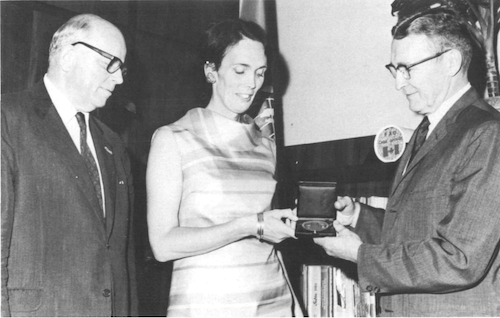As ever, we have added most of these references to our public group on Mendeley, for ease of finding. “Most?” we hear you say. “What gives?” Well, Mendeley and some academic publishers still don’t play nicely. There’s nothing to stop you adding the paper in question by hand, if you’re so inclined, but we don’t really have the time. And if you do, please do it right.
- Why are some biodiversity policies implemented and others ignored? Lessons from the uptake of the Global Strategy for Plant Conservation by botanic gardens. Because there are no feedback mechanisms?
- Genetic improvement of grass pea (Lathyrus sativus) in Ethiopia: an unfulfilled promise. Conventional breeding for low ODAP hasn’t worked, so forget about solving that problem through conventional breeding, and move on to other problems, or use genetic transformation.
- Modeling and mapping potential epidemics of rice diseases globally. It is not particularly well done, but one is surprised to see it done at all. NiM ((Not in Mendeley.))
- Morphological and physiological characteristics of corn (Zea mays L.) roots from cultivars with different yield potentials. More roots means more yield. Among some modern varieties anyway. Under some conditions. NiM
- Trends in literature on new oilseed crops and related species: Seeking evidence of increasing or waning interest. And finding it, alas. Sort of. NiM
- The green colonial heritage: Woody plants in parks of Bandung, Indonesia. Native species used to be used more, and should be used more again. NiM
- Mapping Genetic Diversity of Cherimoya (Annona cherimola Mill.): Application of Spatial Analysis for Conservation and Use of Plant Genetic Resources. Cool maps of microsat hotspots.
- Darwin Core: An Evolving Community-Developed Biodiversity Data Standard. The way out of Genebank Database Hell? Well, maybe the match that will light the torch that will show the way out.
- Seed dispersal in changing landscapes. Fragmentation, harvesting, invasions and climate change affect seed dispersal in ways that need to be understood by conservationists. NiM. And the BBC’s more verbose take on it.
- Distribution models and a dated phylogeny for Chilean Oxalis species reveal occupation of new habitats by different lineages, not rapid adaptive radiation. Title says it all, really. It’s not that a single lineage exploded as new habitats became available. Old lineages were pre-adapted to the new habitats. ((Finding the actual paper online could be really, really hard.))
- Extensive chromosomal variation in a recently formed natural allopolyploid species, Tragopogon miscellus (Asteraceae). Polyploidy leads to all hell breaking lose in the genome for generations.
- Overplaying the role of honey bees as pollinators: A comment on Aebi and Neumann (2011). It’s the wild bees, hoverflies and other native pollinators, stupid! But still.
- Arbuscular Mycorrhizas Reduce Nitrogen Loss via Leaching. 40 times less, no less.
- Distributional migrations, expansions, and contractions of tropical plant species as revealed in dated herbarium records. Eppur si muovono. And more on the paper. And more on herbarium digitization in general. what can I tell you, I’ve got apophenia.
- Ecological and socio-cultural factors influencing in situ conservation of crop diversity by traditional Andean households in Peru. There are influences; and why wouldn’t there be?
